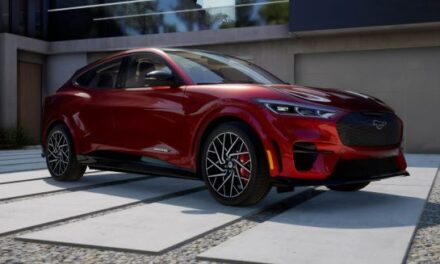Picking the right car is like selecting the perfect instrument for a grand performance — it’s not just about what’s under the hood, but also about the harmony of every design choice that helps you project your personality and lifestyle onto the world’s stage. In the crossover SUV segment, the 2024 Ford Escape and the 2024 Honda CR-V stand out not just for their brand legacy but for their modern features tailored to diverse needs.
In this extensive comparison, we’ll examine every aspect of these two vehicles to help you decide which one deserves the role of your next daily driver or family cruiser. From raw performance to ergonomic door handles, we’ll cover it all. Whether you’re looking for something sporty, frugal, or tech-savvy, this comprehensive guide will illuminate the strengths and quirks of each of these automobile titans.
Capability and Performance Comparison
Available Engine Options
The Ford Escape boasts a compelling variety of engines. The standard 1.5-liter turbocharged three-cylinder engine offers a surprising punch, while a hybrid 2.5-liter four-cylinder powertrain wins efficiency marks. Need more oomph? Ford’s 2.0-liter EcoBoost engine, known for its robust capability in the Mustang, also finds a home in the Escape, offering the kind of power that’ll handle your weekend getaways with ease.
On the other hand, the Honda CR-V remains conservative with a single-engine offering, a 1.5-liter turbocharged four-cylinder. While the lack of choice may deter some, it’s a known reliable and efficient workhorse, delivering a pleasant and uneventful drive.
Horsepower and Torque
Ford Escape’s power figures vary significantly depending on the selected engine. The three-cylinder engine churns out 181 horsepower and 190 lb-ft of torque, providing spirited city drives and decent mid-range performance. Opt for the 2.0L EcoBoost, and you’ll enjoy a substantial 250 horsepower and 280 lb-ft of torque, ensuring a more dynamic driving experience.
Comparatively, the Honda CR-V’s 1.5L engine delivers a more modest 190 horsepower and 179 lb-ft of torque. These numbers may not inspire speed fiends but offer sufficient strength to meet the daily needs of a typical driver.
Towing Capability
In terms of towing, the 2024 Ford Escape, equipped with the Class II Trailer Tow Package, offers a towing capacity of up to 3,500 pounds — a class-leading figure. That’s more than enough to tow a small camper or a pair of jet skis, making the Escape an all-rounder for adventurists.
The Honda CR-V, in contrast, doesn’t emphasize towing. It’s rated to tow around 1,500 pounds, which is standard for a vehicle in this segment and entirely competent for light hauling.
Drivetrain Options
Both vehicles come with a standard front-wheel drive (FWD) setup but provide all-wheel drive (AWD) as an option. The AWD system on the Ford Escape intelligently distributes power to the wheels as needed for enhanced grip and control, while Honda’s Real Time AWD with Intelligent Control System promises a similar performance-enhancing technology for the CR-V.
Overall, the Ford Escape’s varied engine choices, more robust powertrains, and superior towing capacity might sway those who prioritize versatility and capability above all else.
Exterior and Design Comparison
In matters of aesthetics and design, beauty is truly in the eye of the beholder. The 2024 Ford Escape takes more of a car-like approach with its sleek profile and modern design elements. Its athletic stance and bold front fascia resonate with those who value a vehicle’s visual impact.
On the flip side, the 2024 Honda CR-V retains a very ‘Honda-esque’ silhouette with sharp lines and a premium, contemporary design ethos. While it’s not as aggressively stylish as the Escape, the CR-V wins points for timeless appeal and a more spacious overall look.
Interior and Comfort Comparison
The Ford Escape’s cabin is a mix of form and function – contemporary and conventional. It offers premium features like available leather-trimmed front bucket seats and a heated steering wheel that are not traditionally found in its segment. Soft-touch materials and a well-thought-out interior layout add to the Escape’s premium feel.
On the comfort side, the Honda CR-V scores high with standard features like dual-zone automatic climate control and a 12-way power-adjustable driver’s seat. The CR-V exudes a more open and airy environment, partially due to its clever use of space and large windows. Its seats also provide a good balance between comfort and support for long road trips or daily commutes.
Technology and Entertainment Options Comparison
Infotainment Systems
The 2024 Ford Escape offers the latest version of Ford’s SYNC 4 system with an available 12-inch touchscreen, making it one of the largest in the segment. Compatible with wireless Apple CarPlay and Android Auto, the interface is user-friendly and provides a host of connected services and apps.
Honda CR-V’s infotainment is centered around a 7-inch touchscreen that’s intuitive and quick to respond. Though smaller compared to the Escape, it’s still a competent unit that supports similar connectivity features.
Audio Systems
For audiophiles, the Ford Escape can be equipped with a B&O Sound System, designed to give an immersive listening experience, filling the cabin with concert-like sound quality. The Honda CR-V’s audio offering includes a premium audio system with a higher trim level, providing a pleasant listening experience overall.
Other Entertainment and Technology
The tech-savvy Ford Escape includes an available 12.3-inch digital instrument cluster, a head-up display, and FordPass Connect for in-car Wi-Fi. Its suite of driver-assistance technologies, including available adaptive cruise control and lane-centering, is comprehensive.
The Honda CR-V, on the other hand, comes equipped with Honda Sensing as standard across all trims, which includes driver-assist features like collision mitigation braking and adaptive cruise control along with lane keeping assist. It also comes with a multi-angle rearview camera and connected audio options.
Here, personal preference is key. If you’re someone who prioritizes a suite of advanced tech features, the Ford Escape might be the better choice. However, for those who prefer a more minimalist approach, the CR-V’s less complicated systems could offer a more serene user experience.
Safety and Security Comparison
Both vehicles excel in providing a safe ride. The 2024 Ford Escape earned a five-star overall crash test rating from the National Highway Traffic Safety Administration (NHTSA). It comes with an available Ford Co-Pilot360 suite of driver-assist technologies, which includes features like Pre-Collision Assist with Automatic Emergency Braking, BLIS with Cross-Traffic Alert, and a rearview camera.
The Honda CR-V also received high marks for safety, with its Honda Sensing suite offering collision mitigation braking, road departure mitigation, adaptive cruise control, and lane keeping assist as standard across the lineup. It additionally features LED headlights, which are known for superior visibility compared to the Escape’s standard halogen headlights.
While both vehicles offer a multitude of passive and active safety features, Honda’s commitment to making advanced safety tech standard across all trims gives them a slight edge in this department.
Price and Warranty Comparison
Starting MSRP by Trim Level
The Ford Escape’s base S trim starts at a competitive price, making it an appealing choice for budget-conscious shoppers. The upper trims, especially with the added tech and safety packages, can significantly raise the cost but also increase the value proposition.
The Honda CR-V follows a similar pricing pattern, offering a lower starting price with its base LX trim but quickly encroaching on higher price brackets as you move up the trim levels. However, Honda’s large dealer network and potential customer loyalty programs could tip the financial scales in its favor for some buyers.
Warranty Offerings
Ford provides a more extended warranty for its vehicles, including a 3-year/36,000-mile basic warranty, a 5-year/60,000-mile powertrain warranty, and a 5-year/60,000-mile roadside assistance program.
Honda’s warranty package is slightly more conservative, offering a 3-year/36,000-mile limited vehicle warranty, a 5-year/60,000-mile powertrain warranty, and a 3-year/36,000-mile roadside assistance.
It’s a close call, but in the end, the Ford Escape’s longer basic warranty could be a reassuring factor for those who plan to keep their vehicle for an extended period.
Conclusion
In the grand crossover SUV saga, the 2024 Ford Escape and 2024 Honda CR-V each play inherently different roles. The Ford Escape dances to the beat of technology and innovation, combining a sporty character with a practical and spacious interior. Meanwhile, the Honda CR-V embodies the comfortable and reliable companion, with sensible engineering and a timeless design.
Your final choice between these two will depend on your individual tastes and priorities. Whether you value performance flexibility, cutting-edge tech, a plush interior, or renowned reliability and safety — one thing is certain: the careful consideration and comparison you undertake will ensure that the vehicle you drive away with will be the right one for you. And as always, test driving both is the ultimate litmus test before catching that final curtain!
With this enriching comparison, you are now equipped to harmonize with your next vehicle.
Source:





